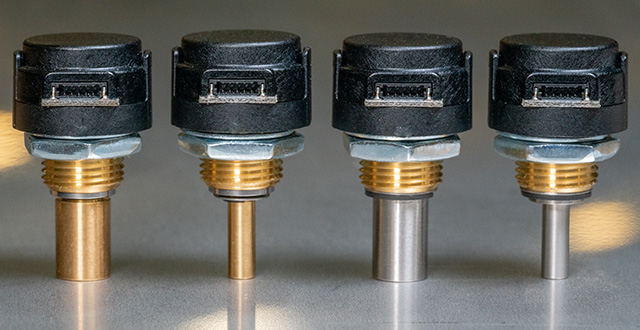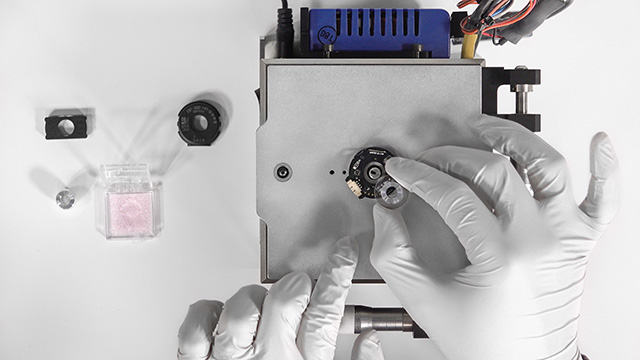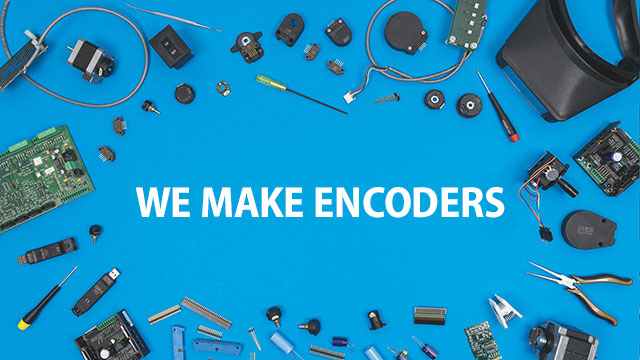Custom Machine Vision System Automates Production
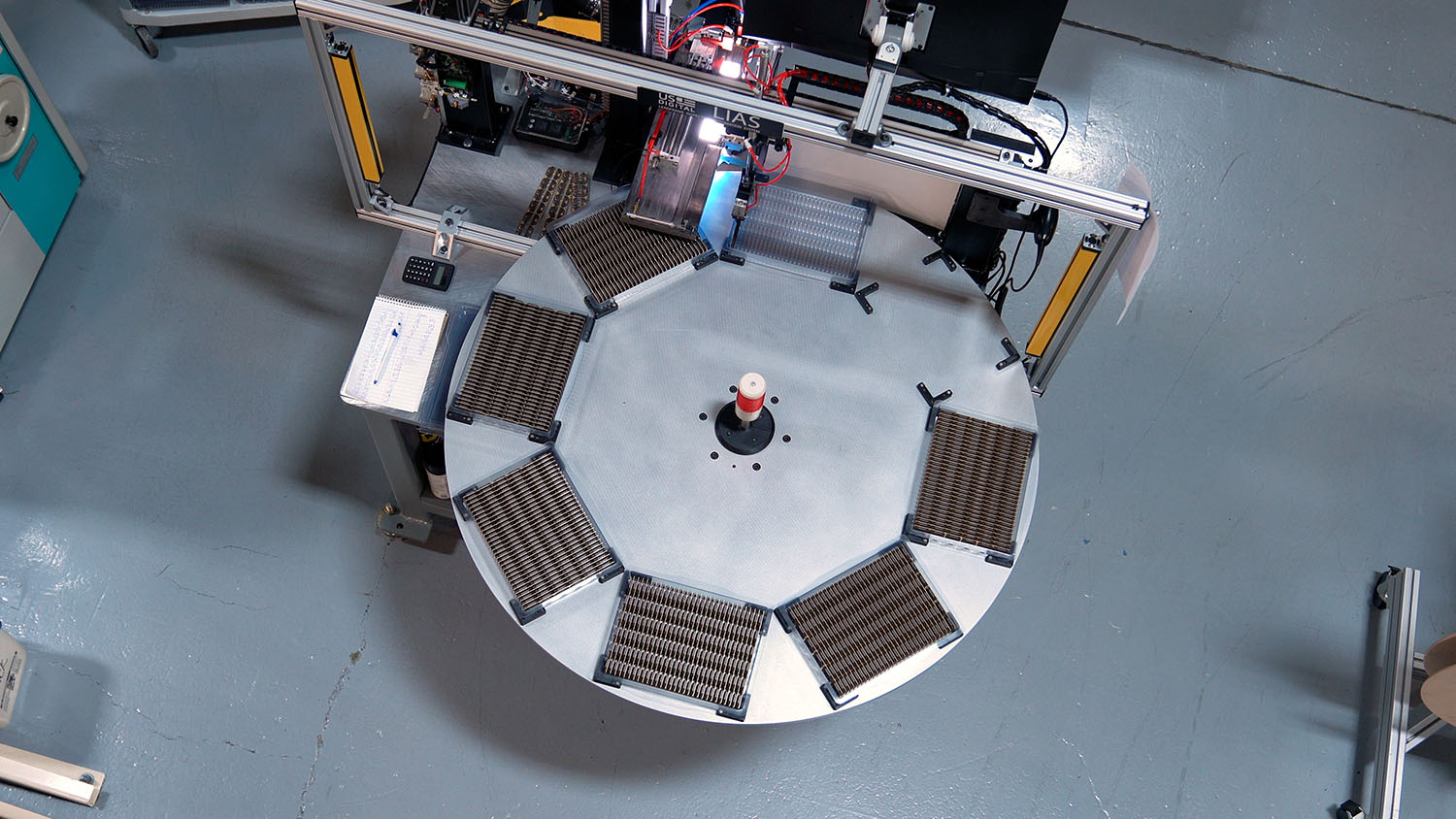
When our engineering team looked for opportunities to improve processes in our injecting molding department, they set their sights on creating a machine vision system to automate the manufacturing of a key component.
The machine, called LIAS or the Lead frame Inspection Automation System, visually inspects our EM1 and EM2 lead frames for manufacturing defects and packages them for transport to our clean room and the next step of the manufacturing process.
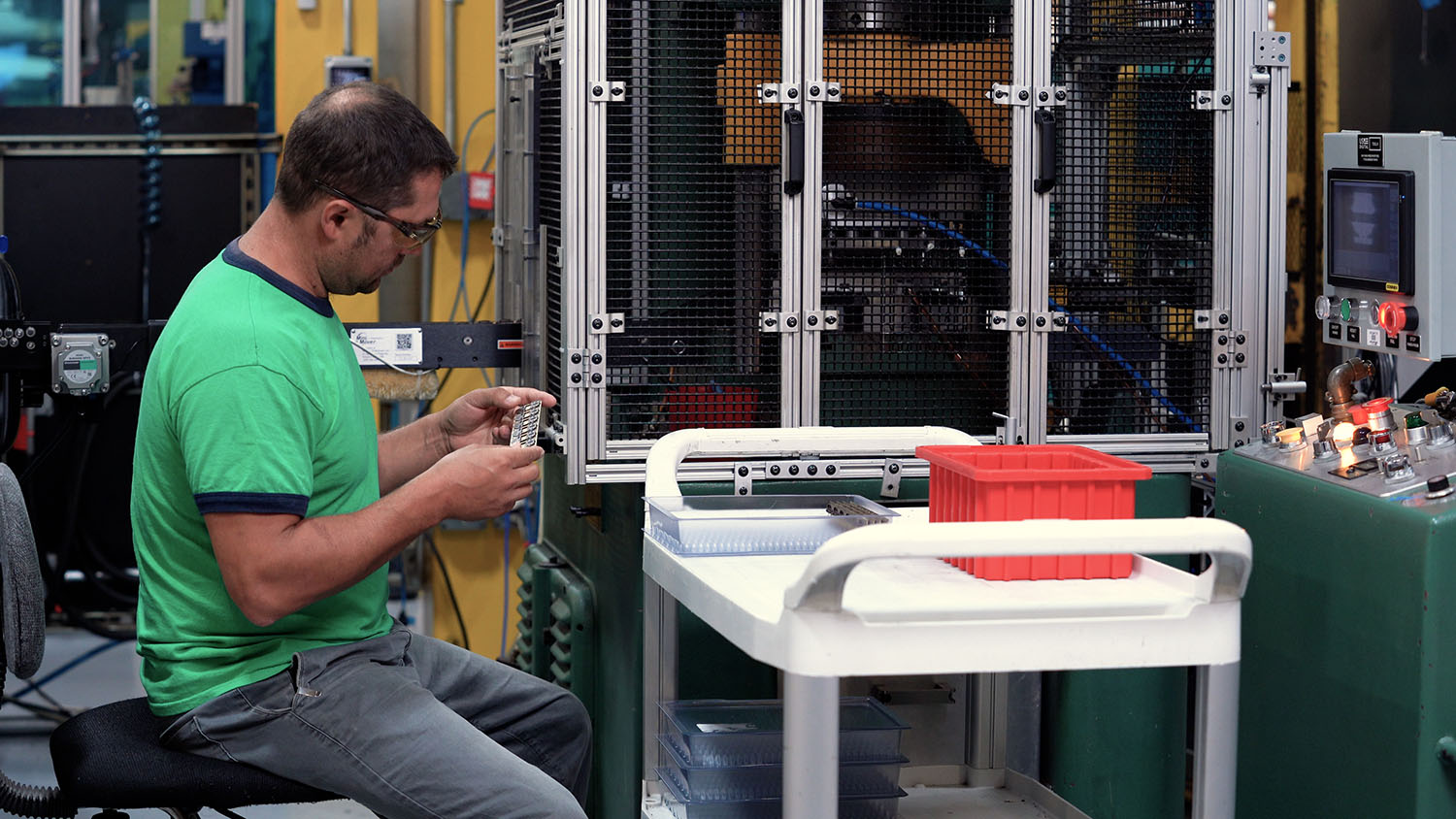
Previously, machine operators would do visual inspections and packaging by hand, which meant they would spend anywhere from 30 minutes to a few hours at the machine each day, depending on how many lead frame reels ran through the machine.
“No process starts fully automated,” US Digital Founder and CEO David Madore said. “In order to get there we start manually and find ways to improve over time.”
Building a custom machine vision system
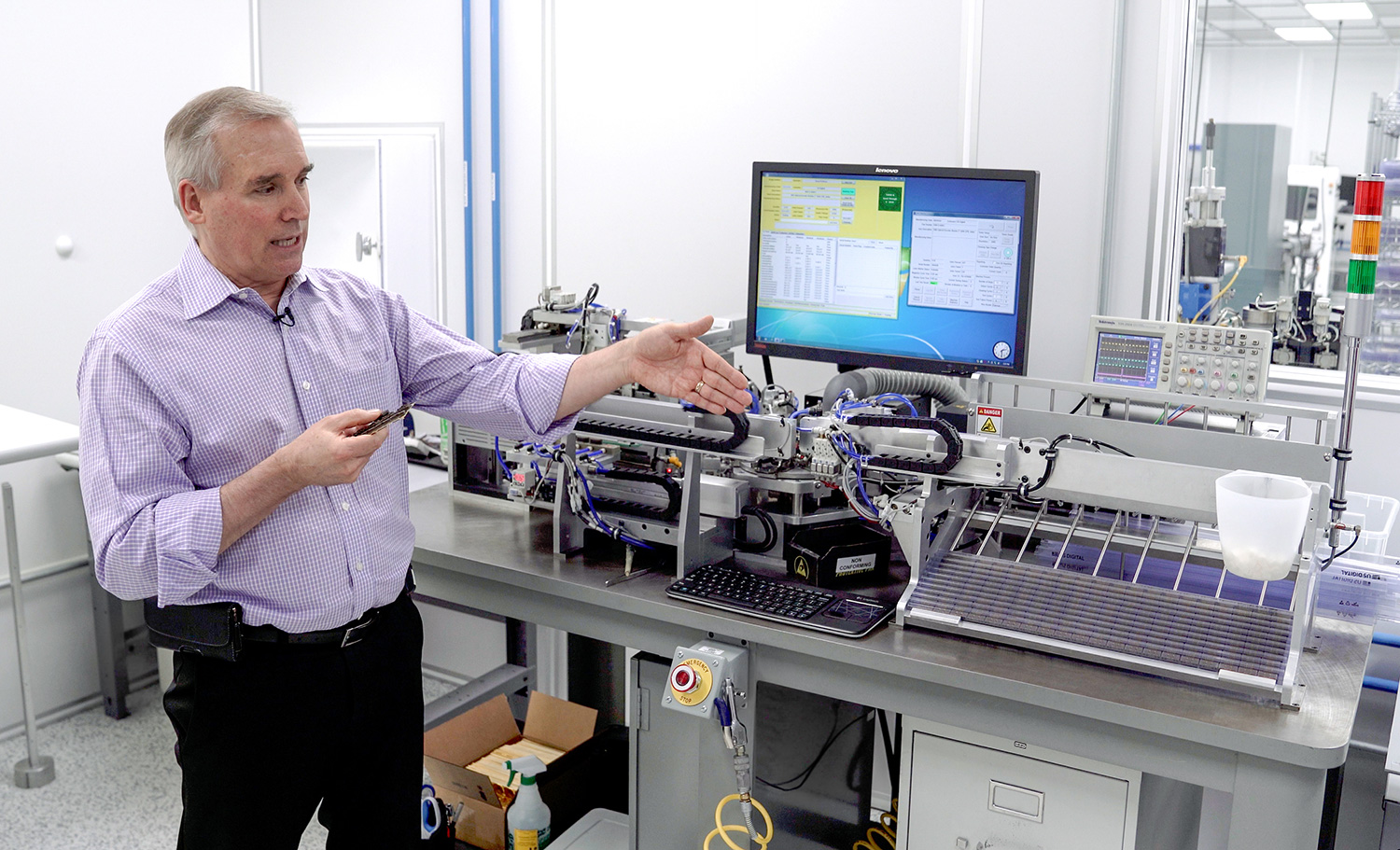
David recently has been working with the engineering team to streamline processes in our injection molding area. He designed LIAS in SolidWorks and then worked with Software Engineer Steve Smith and Machinist Trevor Goforth to make his design a reality.
Steve and Trevor updated and improved features of the design as they went.
“When you design something custom like this, you’re not going to design everything perfectly in software,” David said. “As the machine comes together, we’re going to find opportunities to make it better as we go.”
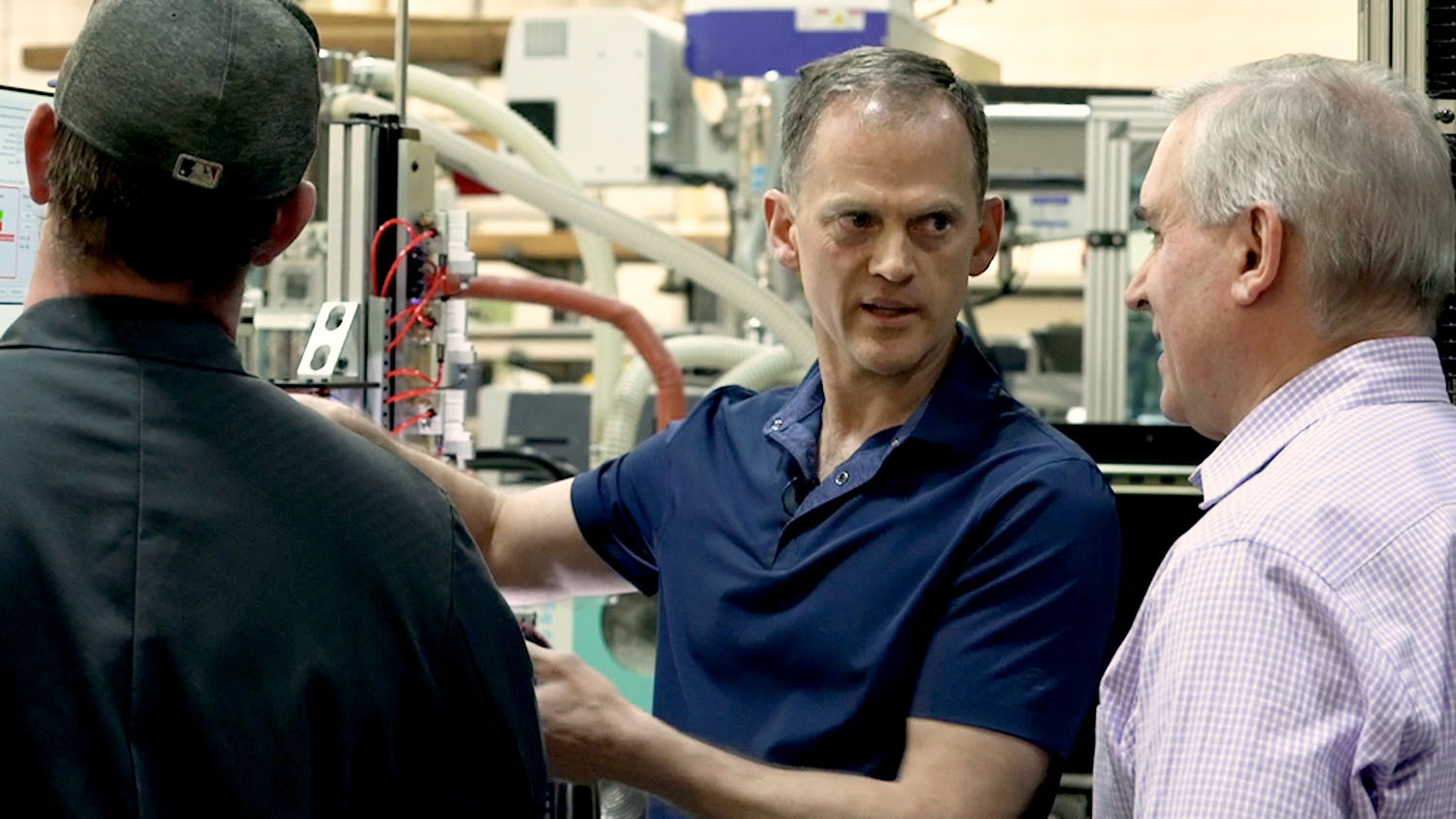
When Steve and Trevor ran into issues with the machine, they developed solutions. In one case, the lead frames would travel too far in the testing station so they added a mechanical stop to briefly hold them in place before they continue in the process.
The build process took several months, but it was a fun learning experience, Trevor said.
“The back and forth between Steve and I was my favorite part of the build,” he said. “Taking our different skill sets and combining them helped make the project easier to accomplish and I learned a lot from him throughout the process.”
While Trevor didn’t feel any additional pressure working on a project designed by the owner of the company, he viewed it as an opportunity to make sure the machine was robust and as efficient as possible.
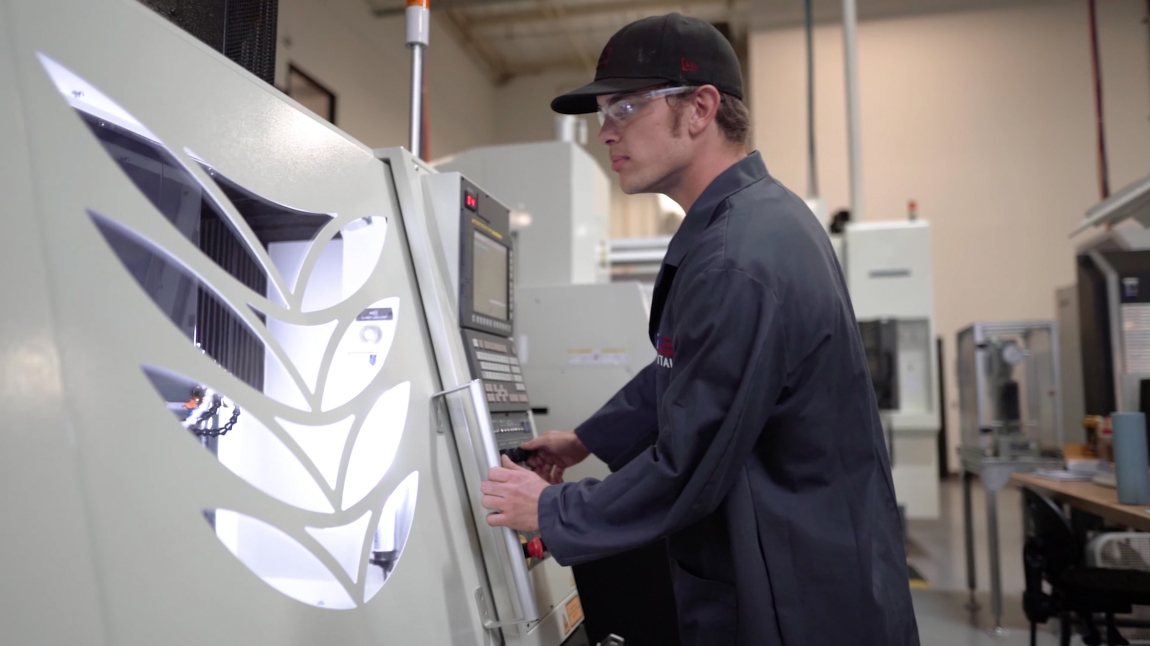
“I wanted to make sure we built something that David and, most importantly, the machine operators would be happy with.” Trevor said.
When the final result came online, David couldn’t help but laugh at seeing his design come to life.
“It’s these little unexpected surprises that give us joy,” he said of watching the machine running for the first time.
The Results
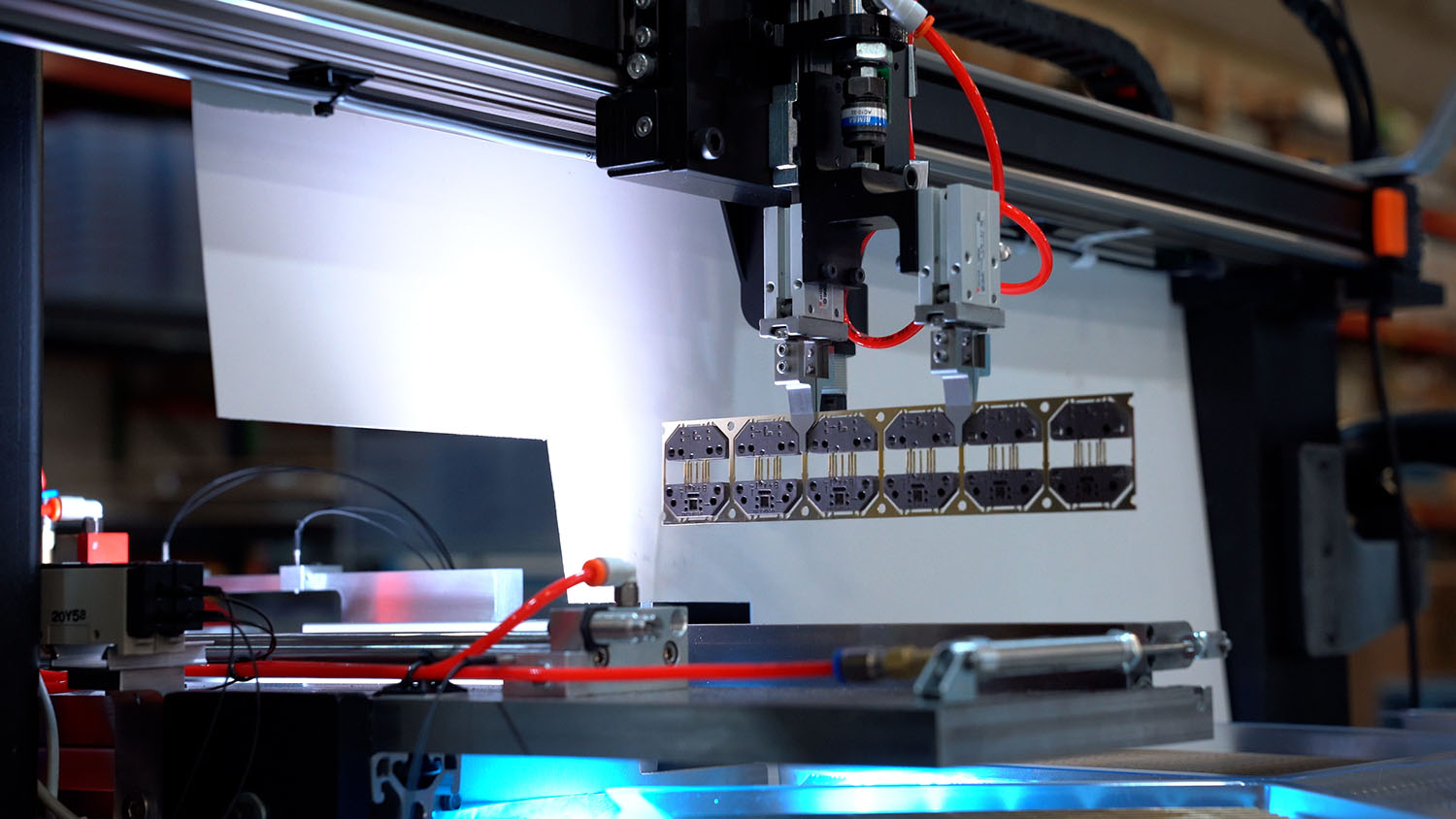
If you frequent our blog, you’ve probably heard that we use automation to create new opportunities, not to replace people. Our machine operators are still working in the plastics area, but are managing the process instead of doing it themselves.
The machine is now up and running and gives our plastics area employees a bit more freedom to manage multiple machines at once, instead of manually inspecting each lead frame as it comes off the punch press.
How does it work?
As lead frames come off the punch press, they are transported via a conveyor belt to LIAS. Along the way, a series of rollers flatten the lead frames which are then sent to the inspection station.
At the inspection station, a silhouetted image is created using a high-powered light below the lead frames and a camera above. The image is then analyzed by Steve’s custom software for manufacturing defects.
Good lead frames are put into containers that can then be taken to our clean room for the next part of the manufacturing process. If the system identifies a bad lead frame, it is put into a reject area. If there are multiple defects in a row, the machine stops and alerts the operator to come investigate.
To see the machine working and more detail on the process, be sure to check out our video below.
What is next for our machine vision system
While the team is proud of their accomplishment, there is still more work to be done.
“It’s 100 percent functioning, it’s 100 percent working,” David said. “Is there room for a little improvement? Yes, but it’s already doing its job.”
Our belief in continuous improvement, means that no process or procedure is ever really done. We’re always keeping our eyes open for ways to further improve our efficiency and automation. Some of those ideas to further improve LIAS will be incorporated into the design of a second version in the near future. The second machine will be used on an additional punch press we recently purchased that will increase our lead frame output capabilities and give us a backup option for redundancy.
Stay up to date
Sign up for our newsletter to stay up to date with our product updates, blog posts, videos and white papers.
US DIGITAL ENCODERS AND CONTROL DEVICES USED AS PART OF CUSTOM AUTOMATION SYSTEM
When we are designing our own in-house automation systems, we try to use as many of our products as practically possible. We used our own encoders and control devices when designing LIAS.
- We used our USB4 Encoder Data Acquisition Devices to connect encoder output signals to the PC at the core of LIAS.
- We used an E3 Optical Kit Encoder to track position of a stepper motor used on the pick and place machine. The encoder provided good accuracy, precise movement and an Index so the picker could return to a home position.
- We also used a MD3 Microstepping Motor Driver to control a stepper motor.
